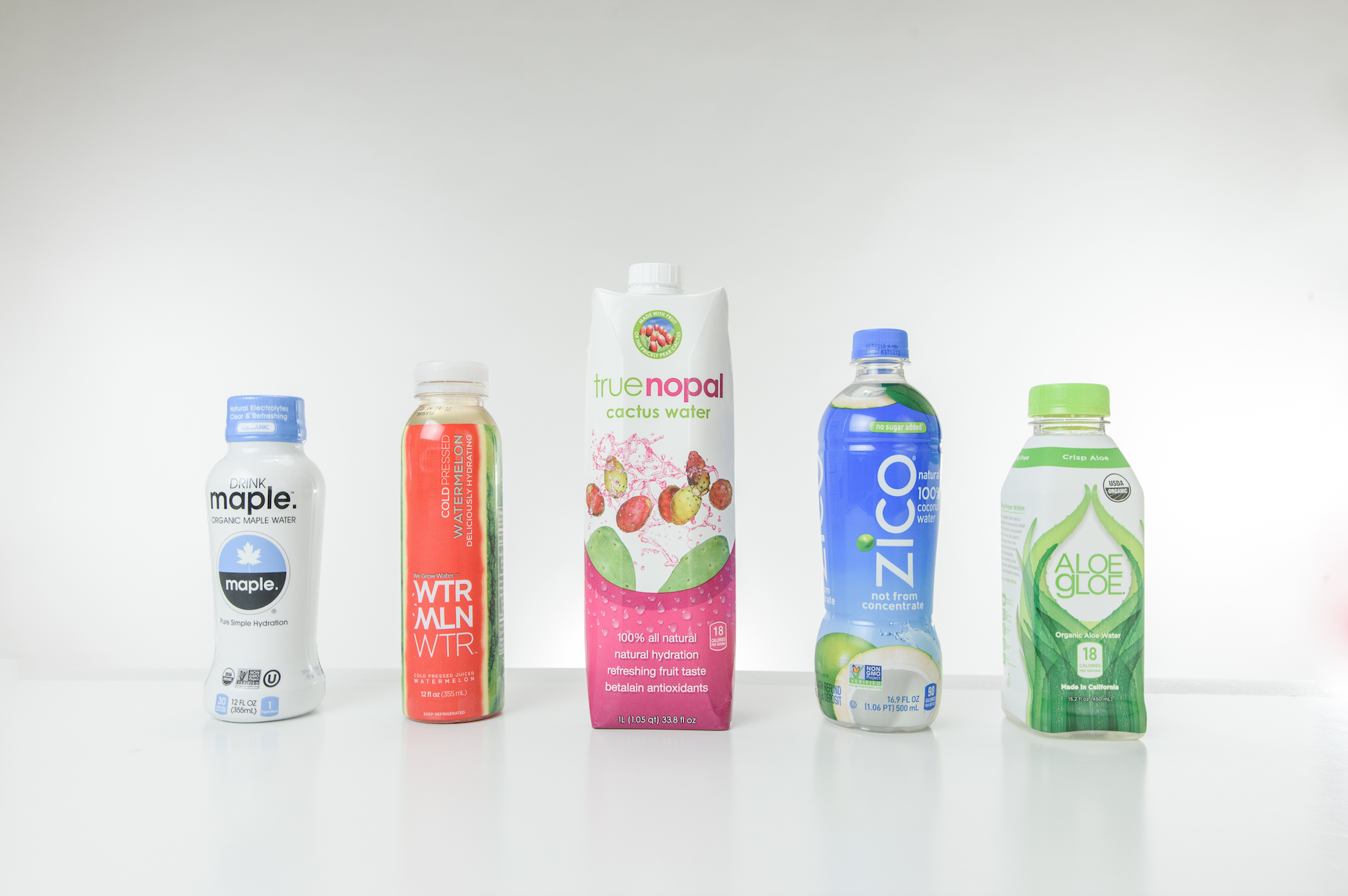Hydration is one of the foundations of good health. You can survive about eight weeks without food, but only about a week (in comfortable conditions) without water. Mild dehydration can cause fatigue, anxiety, headaches and hunger, while long-term dehydration can result in heartburn, joint pain and migraines. Understanding the body’s need for water is straightforward but the emergence of so many specialty flavored waters can make choosing a hydrating beverage confusing.
Plain ole’ filtered water is the original hydrating beverage, but how does it stack up against the flavored water newbies?
Coconut Water
The flavored water frenzy began with coconut water. Coconut water is the liquid from inside young, green coconuts. It is promoted as nature’s sports drink because it contains five electrolytes — calcium, magnesium, phosphorous, sodium and potassium.
The Institute of Medicine recommends that sports beverages contain sodium, potassium and carbohydrate. Sodium and potassium regulate water balance and nerve signaling, which controls muscle contractions, and carbohydrates provide energy. An 8-ounce serving of coconut water contains 600 mg of potassium, 252 mg of sodium and 9 grams of carbohydrate along with 45 calories and 6 grams of sugar.
Although coconut water contains electrolytes and carbohydrate, there is no scientific proof that coconut water is more hydrating than regular water, according to Marjorie Nolan Cohn, a spokesperson for the Academy of Nutrition and Dietetics. The tropical beverage may be healthier than traditional sports drinks, but does not beat out plain water as a healthy, hydrating beverage.
Maple Water
Maple syrup is made from gallons of boiled down maple sap, which is a clear liquid tapped directly from the tree. It is maple sap that has been pasteurized to remove impurities but is otherwise unaltered. A 2013 study published in the Journal of Functional Foods analyzed the nutrient composition of maple sap after pasteurization and sterilization and found that it contains minerals, phenolic contents and antioxidant activity. Maple water tastes like water with a hint of maple syrup and contains 15 calories and 3 grams of sugar in 8 ounces. Maple water contains less calories and sugar than coconut water and might taste like a treat, but there is currently no research to support the superiority of maple water over plain water.
Watermelon Water
The juice that drips down your chin as you dig into a slice of watermelon now comes in a bottle. The ingredient list for watermelon water lists only juiced watermelon flesh and rind and lemon juice. The water alternative boasts many of the same nutritional benefits as the fruit, including potassium, magnesium, vitamin C, lycopene and L-citrulline, an amino acid that may help with muscle recovery. However, watermelon water is missing fiber, which would slow down the absorption of the 12 grams of sugar per 8 ounces. Watermelon water is also short on sodium, the primary mineral lost in sweat during hard workouts. Watermelon water does offer clean ingredients and valuable nutrients but it is high in sugar and low in fiber and sodium. This fruity beverage may make a nice melon mocktail but it won’t replace water.
Aloe Water
Aloe is not just for scrapes and sunburns anymore. The healing gel from the spiny succulent is now a beverage. The reported benefits of drinking aloe vera gel or taking it as a supplement range from heart health to heartburn relief to weight loss. While many of these claims are unsubstantiated, there is evidence that aloe can be helpful for digestion, constipation, healing the mucosal lining of the gut and supporting the immune system according to “Staying Healthy with Nutrition” by Elson M. Hass, MD. To improve the bitter taste of aloe many aloe beverages include juices or other ingredients that improve palatability but also increase calorie and sugar content. Aloe water has been reported to cause gas and bloating and is better suited as a supplement than a water substitute.
Cactus Water
The cactus water at your local grocery store is not a mirage. It comes from the prickly pear cactus fruit and is the newest product in the alternative water craze. It is lower in calories and sugar than coconut and aloe water and claims an abundance of antioxidants. According to a study published in the American Journal of Clinical Nutrition, the cactus pear fruit contains powerful antioxidants (vitamin E, vitamin C, purple-red betanin and the unique yellow indicaxanthin) that protect the body’s cells from free radical damage. Antioxidants have been linked to numerous health benefits including improved skin radiance and reduced muscle soreness following exercise. The anti-inflammatory properties of the prickly pear cactus were shown to moderately reduce hangover symptoms in a 2004 study published in the Archives of Internal Medicine. With the potential to improve skin, decrease muscle soreness and ease hangovers, cactus water is a calorie-conscious addition to workouts or happy hour but water remains No. 1.
Raw Water
The shift to natural alternatives now includes water. “Raw water” is natural water found in the environment from places like springs, lakes and rivers that is untreated, unfiltered and unsterilized. Proponents of the trend claim the unprocessed water is alkaline and abundant in minerals, silica and probiotics exclusively found in raw water. The problem is that beneficial nutrients are not the only things left swimming in untreated “raw water.” Bacteria and other pathogens capable of causing severe illness also remain. Ultimately, raw water is risky.
In the end, mother nature’s original hydrating beverage wins every time. Water is calorie-free, sugar-free, inexpensive and has been hydrating humans for a couple hundred thousand years. Flavored “waters” are a fun treat, but keep your water bottle filled with filtered water.
Related articles:
Mind Over Matter: How Therapy Can Benefit Everyone
Reap The Benefits Of Carrots For Humans And Dogs!
Pesky Pesticides: Should We Be Avoiding Conventional Produce?
The Secret Weapon For Health And Beauty: Baobab Fruit

